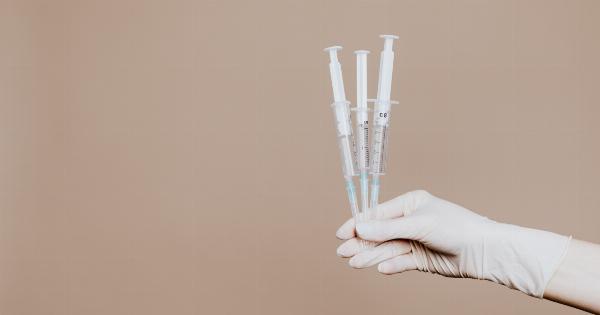Dealing with skin rashes can be a frustrating and uncomfortable experience. From redness and itching to blistering and scaling, rashes can be caused by a variety of factors, including allergies, infections, and even stress.
Fortunately, there are many effective treatments available to relieve symptoms and promote healing. In this ultimate guide, we will explore the causes, symptoms, and ways to treat different types of skin rashes.
Common Causes of Skin Rashes
There are many common causes of skin rashes, including:.
- Allergies – allergic reactions to certain foods, medications, or chemicals can cause rashes
- Infections – fungal, bacterial, and viral infections can all cause various skin rashes
- Environmental triggers – exposure to certain plants or chemicals can trigger rashes
- Stress – stress can cause or exacerbate skin rashes
- Autoimmune disorders – certain autoimmune disorders like psoriasis and lupus can cause skin rashes
Symptoms of Skin Rashes
Symptoms of skin rashes can vary depending on the cause and severity of the rash. Some common symptoms include:.
- Redness
- Swelling
- Itching or burning
- Blisters or bumps
- Scaling or flaking
- Cracking or bleeding
Types of Skin Rashes
There are many different types of skin rashes that can occur. Some of the most common include:.
Atopic Dermatitis
Atopic dermatitis, also known as eczema, is a common inflammatory skin condition. It is characterized by patches of dry, red, and itchy skin that may become scaly or crusty.
Eczema usually occurs on the face, hands, arms, and legs, and can be triggered by environmental factors like harsh soaps and detergents, as well as stress and allergies.
Psoriasis
Psoriasis is a chronic autoimmune disorder that affects the skin. It is characterized by red, scaly patches that may be itchy or painful. Psoriasis can occur anywhere on the body, but is most commonly seen on the elbows, knees, scalp, and lower back.
The exact cause of psoriasis is unknown, but it is believed to be a combination of genetic and environmental factors.
Heat Rash
Heat rash, also known as prickly heat, is a common condition that occurs when sweat ducts become blocked. This can cause tiny red bumps to form on the skin, often in areas where sweat accumulates, like the neck, chest, and groin.
Heat rash is usually caused by hot and humid weather, but can also be triggered by tight-fitting clothing or excessive sweating.
Contact Dermatitis
Contact dermatitis is a type of skin inflammation that occurs when the skin comes into contact with an irritant or allergen. This can cause redness, itching, and sometimes blisters.
Contact dermatitis can be caused by a variety of substances, including poison ivy, soaps, metals, and latex.
Treatments for Skin Rashes
The treatment for skin rashes depends on the cause and severity of the rash. Some common treatments include:.
Topical Steroids
Topical steroids are a type of anti-inflammatory medication that can be applied directly to the skin to reduce redness, swelling, and itching. They are often used to treat eczema and psoriasis, as well as other inflammatory skin conditions.
Topical steroids can be found over-the-counter or prescribed by a doctor.
Antihistamines
Antihistamines are a type of medication that can reduce itching and swelling associated with allergic reactions. They are often used to treat hives and other allergic skin rashes. Antihistamines can be found over-the-counter or prescribed by a doctor.
Moisturizers
Moisturizers can help to soothe dry, itchy skin and prevent further irritation. They are often used to treat eczema, psoriasis, and other inflammatory skin conditions.
Moisturizers should be applied to the skin regularly, especially after bathing or showering.
Antifungal Medications
Antifungal medications are used to treat fungal infections that can cause skin rashes. They can be applied topically or taken orally, depending on the severity of the infection.
Antifungal medications may be available over-the-counter or prescribed by a doctor.
Preventing Skin Rashes
Preventing skin rashes can be difficult, but there are some steps you can take to reduce your risk of developing a rash:.
- Avoid triggers – if you know that certain foods, chemicals, or environmental factors trigger your skin rash, try to avoid them as much as possible
- Keep skin moisturized – using a daily moisturizer can help to prevent dry, itchy skin
- Wear loose-fitting clothing – tight clothing can trap sweat and irritants against your skin
- Practice good hygiene – regularly washing your hands and body can help to prevent the spread of infections
When to See a Doctor
If your skin rash is severe, painful, or not responding to over-the-counter treatments, it is important to see a doctor. They can diagnose the cause of your rash and provide a more effective treatment plan.
You should also see a doctor if your rash is accompanied by other symptoms like fever, vomiting, or difficulty breathing.





























